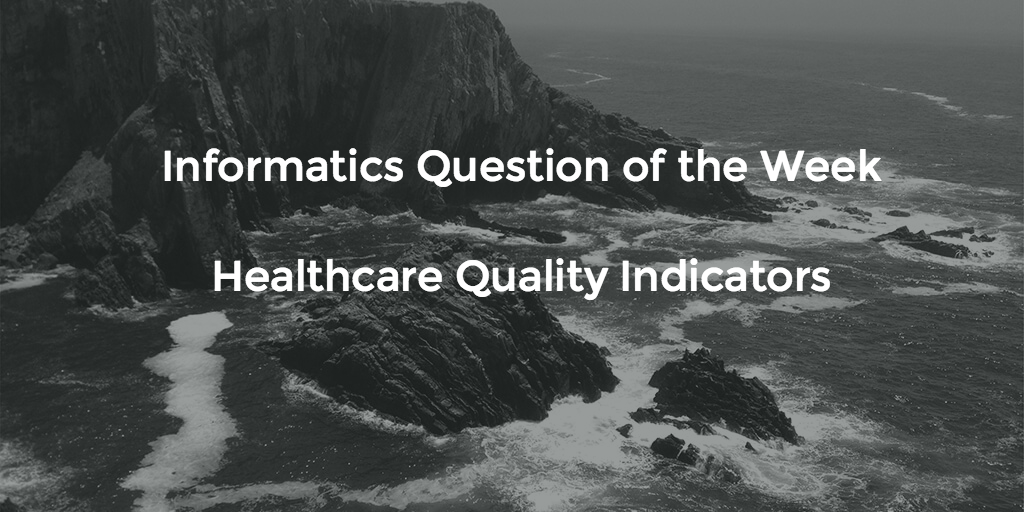Hey guys. Welcome to this week’s practice question of the week. This week’s topic….healthcare quality indicators!
Healthcare Quality is a measure of value of any healthcare services as evaluated by certain standards. As clinicians, our primary goal is to provide medical services of highest quality to all in need of healthcare.
There are many ways to measure the quality of healthcare. From the counts of a therapy’s reduction or reduction of diseases identified by medical diagnosis to decreases or increases of risk factors that people have after preventative care, to surveys of health indications in people who have access to certain healthcare services.
One of the primary accepted means of measuring quality comes in the form of quality indicators. These quality indicators measure healthcare quality by using hospital inpatient administrative data to identify potential risks and areas that require further research. Moreover, informatics quality indicators track changes in healthcare quality over time.
Some of healthcare quality indicators include the following:
Prevention Quality Indicators (PQI)
- Hypertension Admission Rate
- Dehydration Admission Rate
- Lower-Extremity Amputation among Patients with
- Diabetes Rate
Prevention Quality Indicators (PQI) are a series of measures that identify quality of healthcare for ambulatory care sensitive conditions. For this kind of conditions good outpatient care can prevent the need for hospitalization or prevent the worsening of the patient’s state in case of early intervention.
Inpatient Quality Indicators (IQI)
- Abdominal Aortic Aneurism Repair Volume
- Acute Stroke Mortality Rate
- Pancreatic Resection Mortality Rate
Inpatient Quality Indicators (IQI) are a series of measures that implement hospital administrative data to provide a point of view on hospital quality of care. The IQIs indicate the quality of healthcare inside hospitals, including inpatient mortality in certain medical conditions and procedures.
Patient Safety Indicators (PSI)
- Postoperative Sepsis Rate
- Retained Surgical Item or Un-retrieved Device Fragment
- Rate
- Transfusion Reaction Rate
Patient Safety Indicators (PSI) are a series of measures that give information about possible in hospital complications and predict potential complications after certain procedures, surgeries, childbirth, etc. The PSI set of measures was designed after researchers carried out a large-scale healthcare literature review, review by a clinician panel, analysis of ICD-9-CM codes, implementation of risk adjustment, and empirical analyses.
Pediatric Quality Indicators (PDIs)
- Neonatal Bloodstream Infection Rate
- Iatrogenic Pneumothorax Rate
- Asthma Admission Rate
Pediatric Quality Indicators (PDIs) are a series of measures that provide a perspective on the quality of pediatric healthcare by implementing hospital inpatient discharge data. For example, the PDIs identify issues that pediatric patients face following exposure to the healthcare system.
Question
What kind of health care quality indicators do you know?
A) PQI, SQI, PSI, PDIs
B) DQI, SQI, PSI, PDIs
C) SQI, PQi, PLS, PDls
D) PQI, IQI, PSI, PDIs
Answer and Explanation
The correct answer is D) – Prevention Quality Indicators (PQI), Inpatient Quality Indicators (IQI), Patient Safety Indicators (PSI), Pediatric Quality Indicators (PDIs).
Just as a note, for the informatics exam, it’s unlikely you’ll have to memorize acronyms, but you may encounter them in everyday practice.
References & Recommended Reading
AHRQ’s Quality Indicator Resources
http://www.qualityindicators.ahrq.gov/modules/Default.aspx
